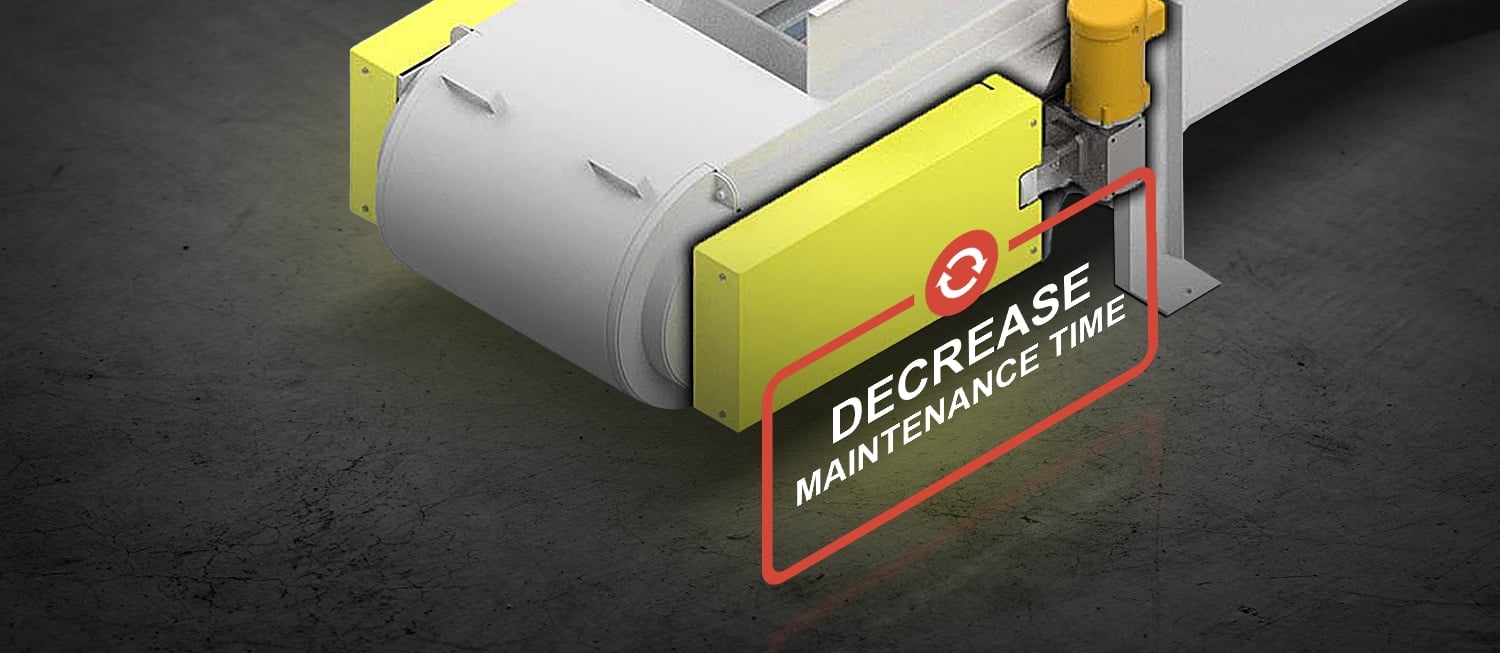
As the metalworking industry continues to face challenges from a widespread lack of skilled workers, reducing downtime and keeping production consistent is more important than ever.
The National Association of Business Economics found that 47% of respondents to its Business Conditions Survey reported a shortage of skilled workers in the third quarter of 2021. With this shortage projected to continue, finding new ways to incorporate automation into machining operations may provide a much-needed solution to a lack of technician and maintenance resources. It would also help prevent equipment failures that cause unplanned downtime.
For example, a few automated conveyor design enhancements that can decrease the need for manual labor include auto-take up systems, auto-lubrication systems, and control systems programmed for machine monitoring.
1. Auto-take up systems reduce manual belt maintenance.
Conveyor belts require regular maintenance. In fact, belt adjustments are one of the most common causes of conveyor downtime. Conveyor chains stretch as they age, which may cause the belt to slip off the sprocket and fold up under itself. This can lead to belt damage, stopped production, and costly downtime.
To eliminate manual belt adjustments and the issues associated with stretched belts, an auto-take up system can be designed into the conveyor. This feature automatically monitors tension using load cells on chain conveyors and tightens the belt to eliminate manual adjustments and downtime. These systems can be added to new conveyors or retrofitted onto existing models. Automatic adjustments can be scheduled to be completed during low production times or shift changes.
2. Auto lube systems eliminate manual bearing maintenance.
Auto lube systems supply a small amount of clean grease or oil to conveyor bearings to ensure consistent lubrication. These systems not only improve bearing performance but also eliminate the need for personnel to manually lubricate bearings or outsource the maintenance to a third party.
3. Machine monitoring optimizes maintenance and reduces operator intervention.
Control systems programmed to monitor conveyor performance enable operators to time preventative maintenance to minimize impact on production. Also, when a machine faults, it is often down for hours. Control systems enable operators to manage faults much more efficiently. Systems that feature intuitive fault recovery and the ability to resolve faults and return the control equipment to a normal operating state–all without operator intervention–substantially decreases downtime.
Conclusion
Researching automation for conveying equipment may lead to lower labor and maintenance costs and increased uptime. If your operation will be investing in new conveyor equipment–or looking to maximize current conveyor uptime–consult with a trusted provider of metal scrap handling equipment to discuss automated maintenance options.
For more information regarding PRAB, please visit prab.com or contact us.